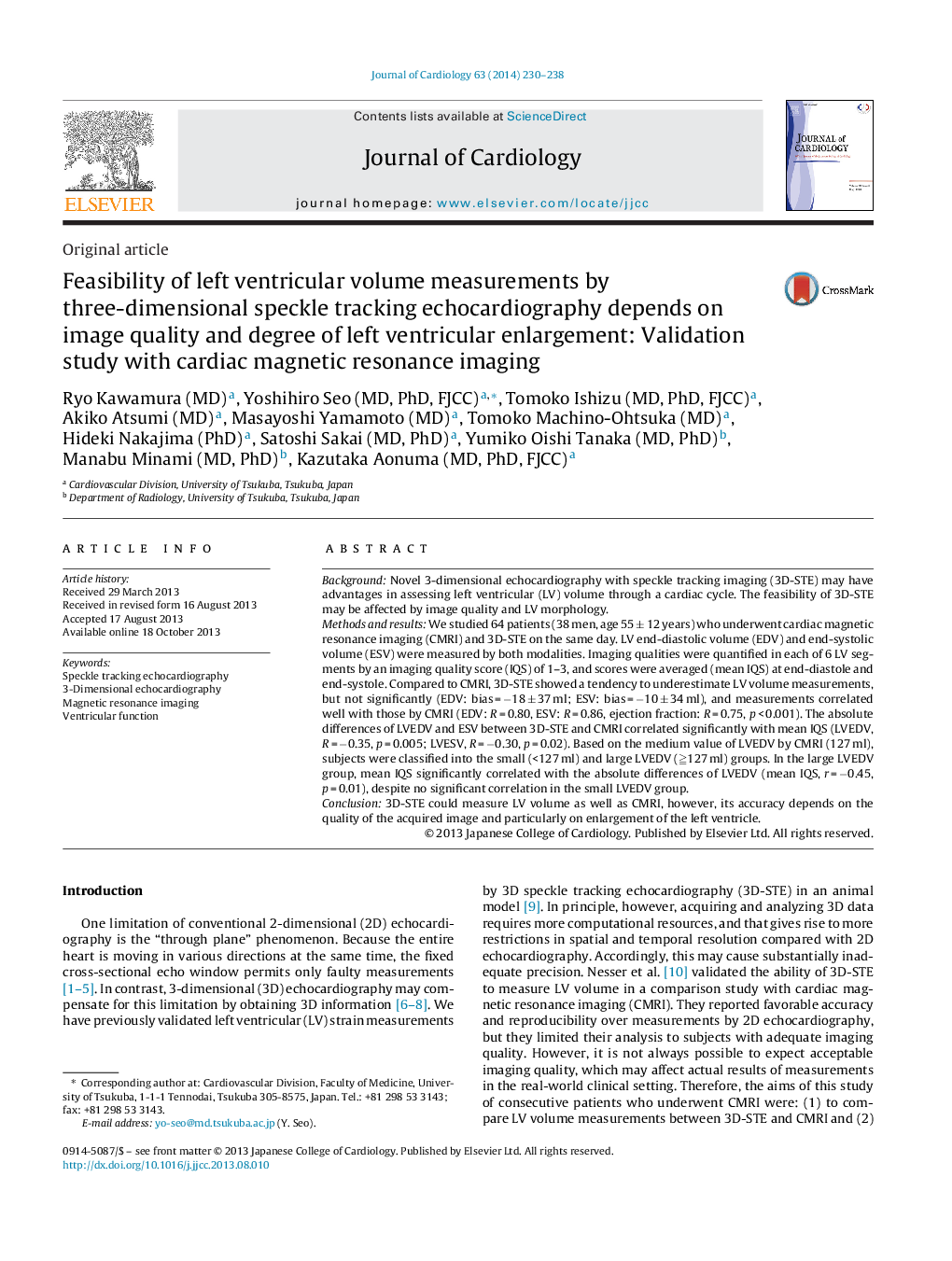| Article ID | Journal | Published Year | Pages | File Type |
|---|---|---|---|---|
| 2963056 | Journal of Cardiology | 2014 | 9 Pages |
BackgroundNovel 3-dimensional echocardiography with speckle tracking imaging (3D-STE) may have advantages in assessing left ventricular (LV) volume through a cardiac cycle. The feasibility of 3D-STE may be affected by image quality and LV morphology.Methods and resultsWe studied 64 patients (38 men, age 55 ± 12 years) who underwent cardiac magnetic resonance imaging (CMRI) and 3D-STE on the same day. LV end-diastolic volume (EDV) and end-systolic volume (ESV) were measured by both modalities. Imaging qualities were quantified in each of 6 LV segments by an imaging quality score (IQS) of 1–3, and scores were averaged (mean IQS) at end-diastole and end-systole. Compared to CMRI, 3D-STE showed a tendency to underestimate LV volume measurements, but not significantly (EDV: bias = −18 ± 37 ml; ESV: bias = −10 ± 34 ml), and measurements correlated well with those by CMRI (EDV: R = 0.80, ESV: R = 0.86, ejection fraction: R = 0.75, p < 0.001). The absolute differences of LVEDV and ESV between 3D-STE and CMRI correlated significantly with mean IQS (LVEDV, R = −0.35, p = 0.005; LVESV, R = −0.30, p = 0.02). Based on the medium value of LVEDV by CMRI (127 ml), subjects were classified into the small (<127 ml) and large LVEDV (≧127 ml) groups. In the large LVEDV group, mean IQS significantly correlated with the absolute differences of LVEDV (mean IQS, r = −0.45, p = 0.01), despite no significant correlation in the small LVEDV group.Conclusion3D-STE could measure LV volume as well as CMRI, however, its accuracy depends on the quality of the acquired image and particularly on enlargement of the left ventricle.
